Dioxin is extremely toxic, just 10mg mixed in water can kill millions of people. Toxic chemicals have exposed more than 4 million Vietnamese people; of which more than 3 million people are victims. There have been tens of thousands of deaths nationwide, millions of people suffering from incurable diseases, carrying many dangerous diseases caused by Agent Orange... The lives of Agent Orange/dioxin victims are extremely difficult and lacking. due to many deformities, many cases of loss of consciousness, no opportunity to participate in labor and integrate into life. Statistics of the Vietnam Association of Victims of Agent Orange/dioxin show that: 22% of the families of Agent Orange victims have 3 or more victims, of which 70% of the victim\'s households are poor; 90% of victims have no professional skills. Although the Party, State, as well as Party committees and authorities at all levels have made great efforts in promulgating policies as well as organizing care for Agent Orange victims, with severe sequelae, the possibility of infection Agent Orange transmitted for many generations is causing many difficulties for the families of Agent Orange victims. Currently, Agent Orange has been transmitted to the 3rd and 4th generations in Vietnam. Most of the victims of Agent Orange in this generation were deformed, born with birth defects, and were vegetative. Especially, the consequences of Agent Orange/dioxin cause many malformations, severe deformities such as mental retardation, mute-deafness, Down syndrome, strabismus, epilepsy, cleft lip, cleft palate and cleft palate., clubbing, muscle atrophy, paralysis, deformity of the limbs... Meanwhile, conditions for care, examination and treatment for Agent Orange/dioxin victims in the community are limited; Therefore, taking care of and helping victims at home is very necessary. Within the scope of this workshop, I would like to mention the issue of helping Agent Orange/dioxin victims with disabilities to rehabilitate at home.
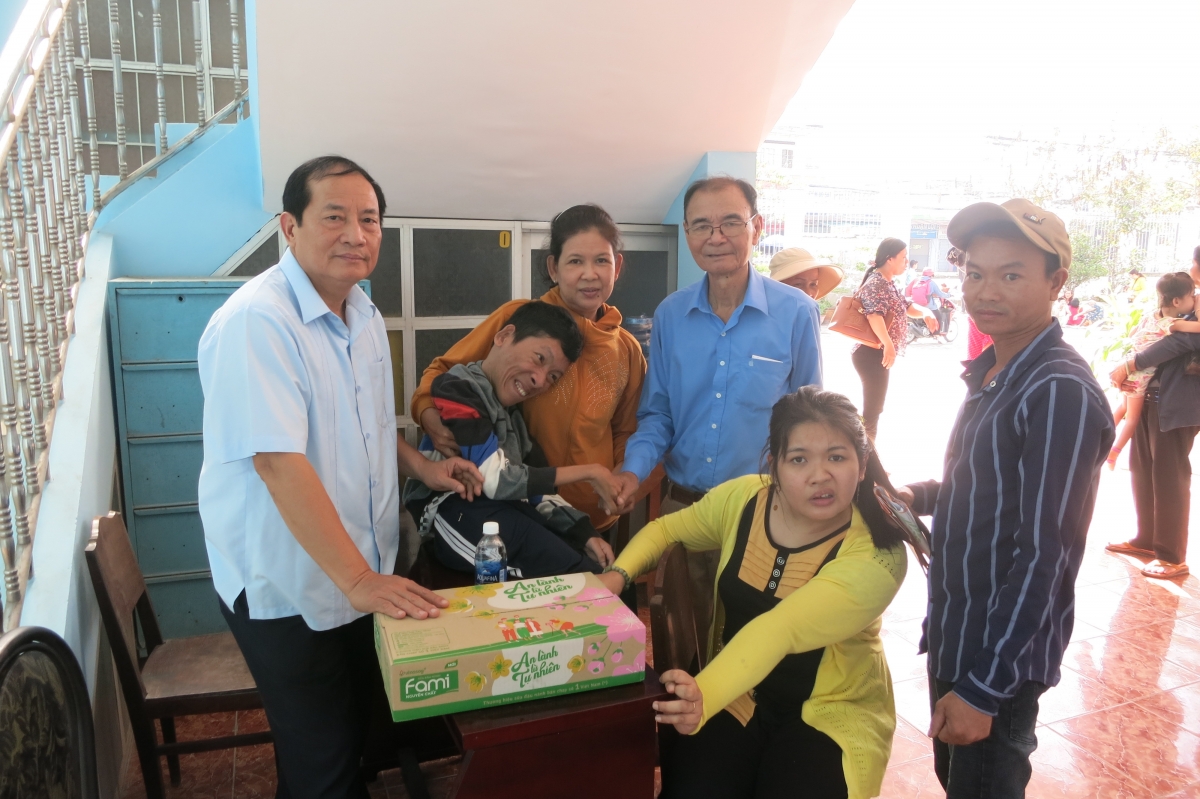 |
The goal of rehabilitation for Agent Orange victims at home is to: support the ability to recover, reduce the risk of disability due to impairment factors, dysfunction, etc. of body. Increase positive thoughts and behaviors to bring better quality of life to patients, prevent secondary diseases; helping Agent Orange victims to maximize physiological, mental and occupational functions that have been reduced or lost due to defects and reduced ability to cause; create maximum independent life; help victims improve their quality of life, integrate into family, society and earn income.
Content of rehabilitation for Agent Orange victims at home includes: synthesis of techniques (modern medicine and traditional medicine) rehabilitation to make the patient perform to the maximum. reduced or lost functions: physical therapy to assist in rehabilitation; occupational therapy to help restore mobility, therapeutic activities, vocational re-education; Speech therapy is applied to patients with speech difficulties, special education methods are used to teach the use of signs to communicate with deaf-mute people, and braille is taught to the visually impaired.. help them regain lost communication functions; using assistive devices, such as hearing aids, prostheses, splints, crutches, wheelchairs...
Principles of rehabilitation for Agent Orange victims at home include: (1) attaching importance to the role of victims and their families as well as the community in the rehabilitation process; (2) analyze and determine the right condition to have the appropriate forms and exercises of physical therapy to bring the highest efficiency; (3) minimize secondary injuries during treatment, shorten the healing time for the earliest recovery; (4) know how to involve the victim in health promotion activities; should not act on behalf of the sick person when they are capable of doing so.
Rehabilitation at home is the best way to socialize rehabilitation; attract family members, volunteers in the community, social organizations such as the youth union, women\'s union, the Fatherland Front, and the grassroots government system to participate in public affairs. rehabilitation for patients. This is the best form to change the community\'s perception of Agent Orange victims with disabilities, creating the most favorable conditions for victims to integrate into their families and society. The highest percentage of victims with disabilities being rehabilitated. Rehabilitation at home can also be widely deployed across the country, so that the number of victims has the greatest chance of rehabilitation. Meeting the basic needs of the patient, suitable for the place where they live, giving them the opportunity to integrate into society. Victims still live at home and in the locality, so rehabilitation programs are designed in accordance with geographical circumstances, living habits, and local economic conditions, helping patients to easily integrate into their lives. import. The cost of rehabilitation is less expensive, easy to accept. On the other hand, home-based rehabilitation can take advantage of local facilities such as making assistive devices or training facilities with locally available materials such as bamboo and wood, reducing costs for work. Rehabilitation. Utilizing local human resources to help overcome the shortage of human resources.... However, this work has limitations as the results of rehabilitation for difficult cases, severe cases are often low; especially these families, often have difficult economic circumstances, do not have the human resources and expertise to regularly monitor and help, which has greatly affected the rehabilitation outcomes for the patients.
In order to achieve the goals, contents and forms of assisting victims of Agent Orange/dioxin with disabilities in rehabilitation at home, it is necessary to pay attention to implementing a number of specific solutions as follows:
- Firstly, focus on education to raise awareness of society and each family in supporting the rehabilitation of Agent Orange/dioxin victims at home.
In fact, through surveys in families with disabled Agent Orange/dioxin victims, most of them do not pay attention to helping the sick person to function, mainly stop at the level of concern for health care. health, nutrition; making it difficult for patients to live independently and integrate into community life. For that reason, education raises awareness and actually transforms each family member\'s awareness about the care and support of Agent Orange victims for rehabilitation at home. is very important. To raise awareness among family members about the needs, rights and capabilities of Agent Orange victims with disabilities and about community-based rehabilitation programs, a program of action and measures is needed. closely coordinated law. All members should be provided with information to help them understand their role in creating an enabling environment for victims to cooperate and reach their full potential in home rehabilitation.
- Second, pay attention to training, fostering knowledge and training in rehabilitation expertise for victims\' families.
Promote communication for the families and themselves of Agent Orange victims who are disabled, understand the role and meaning of rehabilitation at home; at the same time, organize training courses to improve capacity for those who directly conduct the work. Coordinate with the hospital to foster in-depth knowledge of rehabilitation management and skills for early detection and early intervention; organize practice exercises at the Department of Physiotherapy and Rehabilitation at the provincial hospital in order to foster knowledge and practical capacity for family members of victims who need care and rehabilitation at the hospital. family. Through training sessions, direct practice, exposure and practice with various rehabilitation equipment at the hospital, members have been confident in their training techniques for victims. In addition, periodically it is necessary to organize training on basic knowledge on rehabilitation, how to collect information and detect diseases related to victims, especially new diseases arising in victims. On that basis, the family cooperates with district and provincial hospitals to promptly treat the patient, avoid new complications, and affect the victim\'s health.
- Thirdly, regularly pay attention to support equipment, tools and medical services for families in need of rehabilitation for victims at home.
The need for health care and rehabilitation of Agent Orange victims is great, while access to medical services is still difficult, especially for families in rural and mountainous areas. The most desirable thing of the victim and family is to soon have medical equipment provided to support exercise and rehabilitation at home (currently reality, rehabilitation practice at home) Agent Orange victims\' families also rely mainly on self-made equipment to practice and restore daily motor function). On the other hand, the provision of medical care services, helping with early detection, early intervention of disability and rehabilitation for victims of Agent Orange/dioxin also need to be further socialized. Agent Orange/dioxin at district and commune levels should actively contact political and social organizations; mass organizations; businesses, philanthropists and a number of international organizations to plan to receive and coordinate vehicles and equipment to assist victims in rehabilitation such as wheelchairs, shakers, assistive machines hearing, sports training equipment.... Once the family has the means and tools to support, the rehabilitation of the victim can be really effective.
- Fourthly, close coordination between families, primary treatment facilities and hospitals with medical examination, treatment and rehabilitation facilities for victims of disabilities.
Rehabilitation includes medical, economic, educational and adaptive rehabilitation techniques that reduce the impact of functional impairment and disability, and ensure the integration and reintegration of people with disabilities into society. society, have equal opportunities to participate in social activities. Rehabilitation helps to treat diseases, enhance remaining capacity, restore physical and mental function, relieve pain, prevent disability... In many countries, especially developed countries, the role of rehabilitation Rehabilitation is respected, but in Vietnam many people still do not know the role of rehabilitation. In fact, rehabilitation at hospitals and centers for fostering and caring for victims of Agent Orange can only meet 5-10%. Meanwhile, victims mainly live at home (80-85%). Due to the characteristics of Agent Orange victims, they often have difficulty moving and walking; Therefore, close cooperation between the family and the primary health care facility is essential. When the victim needs help from the hospital, the doctors, midwives and specialized nurses have grasped the patient\'s history; promptly provide a treatment plan right away and soon so that the patient can reduce the damage to health and spirit. On the other hand, in recent years, with the attention of the health sector, most of the provincial and municipal hospitals in the country have had rehabilitation departments with modern medical equipment; Therefore, the issue of close cooperation between family and hospital for the rehabilitation of Agent Orange victims who are disabled at home in the current situation is a job that needs attention.
- Fifthly, regularly summarize and draw experience on the model of care and rehabilitation at home, on that basis, make recommendations to the health sector to continue caring for and supporting victims. Agent Orange is a person with disabilities who is rehabilitated at home.
The model of health care and rehabilitation for Agent Orange victims at home, deployed in a spontaneous and organized form, has existed for a long time; However, for many different reasons, it has not been summarized so far to learn from and replicate in the whole country. For the Ministry of Health, in 4 years (2014 - 2017), the project \"Organizing rehabilitation in the community for victims of toxic chemicals used by the US during the war in Vietnam\" by Prof., Dr. Le Ngoc Trong; Dr. Phan Van Tien; Assoc., Dr. Tran Trong Hai; Assoc. Prof, Dr. Nguyen Thi Minh Thuy and colleagues at the University of Public Health and the Ministry of Health have conducted and obtained positive results: \"The project has built and maintained a network of 1,158 collaborators community-based rehabilitation in 13 districts in 6 provinces: Lao Cai, Thai Binh, Quang Nam, Quang Ngai, Dong Nai and Ben Tre; disability detection and rehabilitation needs assessment for 22,694 people with disabilities; 13,169 people with disabilities (including victims of Agent Orange) had their rehabilitation needs assessed by collaborators, planning and guiding rehabilitation at home, counseling and transferring knowledge to victims. victims and family members of the victim as well as instructing the family to make self-made assistive devices such as crutches, canes, parallel bars, pulleys, etc., which are suitable for supporting rehabilitation exercises at home of the victim/disabled person. About 1,900 victims/disabled people have made progress in rehabilitation training, social integration, and improved health. Rehabilitation for people with disabilities due to the effects of Agent Orange is the responsibility of the whole community. Bringing people with disabilities into society requires the cooperation of both families and society. Supporting rehabilitation at home is a suitable solution in our country\'s conditions. Achieving high results requires the synchronous participation of the State, authorities at all levels where the infected person is located, the community as well as the family.
Hopefully in the near future, the health sector will continue to implement many positive and synchronous measures to support and help the above model operate more and more effectively. Especially, the implementation of the project \"Health care and rehabilitation for victims of toxic chemicals/dioxins in the period 2018 - 2021\" is being coordinated by the Department of Medical Examination and Treatment (Ministry of Health) Relevant units have implemented and brought positive results in 11 provinces and cities participating in the project; will certainly be a scientific and practical basis for summarizing the rehabilitation model at home for Agent Orange/dioxin victims; contribute to taking care of and helping Agent Orange/dioxin victims to stabilize their lives and integrate into the community.
Lieutenant General Assoc. Dr. Dang Nam Dien
Colonel Dr. Pham Xuan Thang
REFERENCES
- Guidance for people with disabilities in rehabilitation based on family and community, Medicine Publishing House, H.2008;
- Summary report on research results of Project: \"Organization of rehabilitation in the community for victims of toxic chemicals used by the US during the war in Vietnam\" period 2014-2017; Ministry of Health;
- Rehabilitation; Assoc. Prof. Dr. Ha Hoang Kiem, Military Hospital 103/Ministry of Defense;
- Document of the 4th Congress, term 2018-2023 of the Association of Victims of Agent Orange/dioxin.
- Circular No. 18/2016/TT-BYT stipulating the list of techniques, the list of medical supplies used in rehabilitation and the payment of rehabilitation expenses.



_thumb_720.jpg)
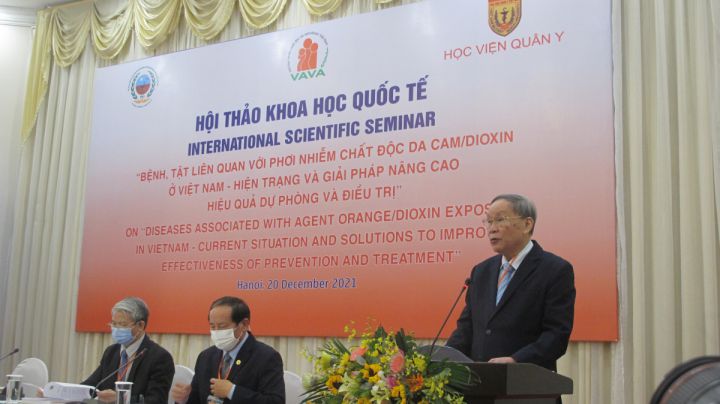







_thumb_720.jpg)












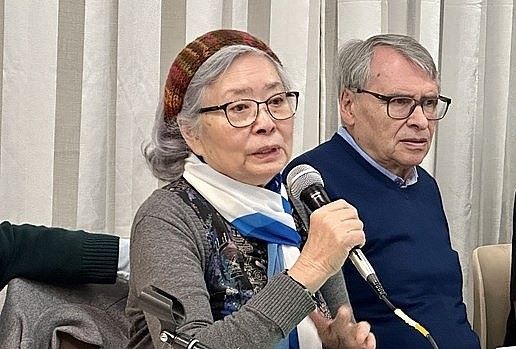
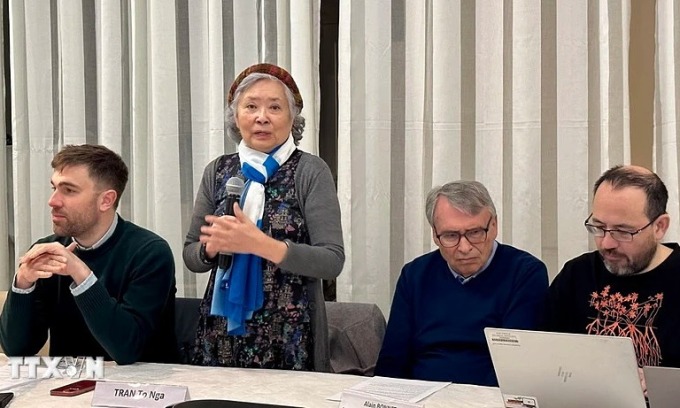

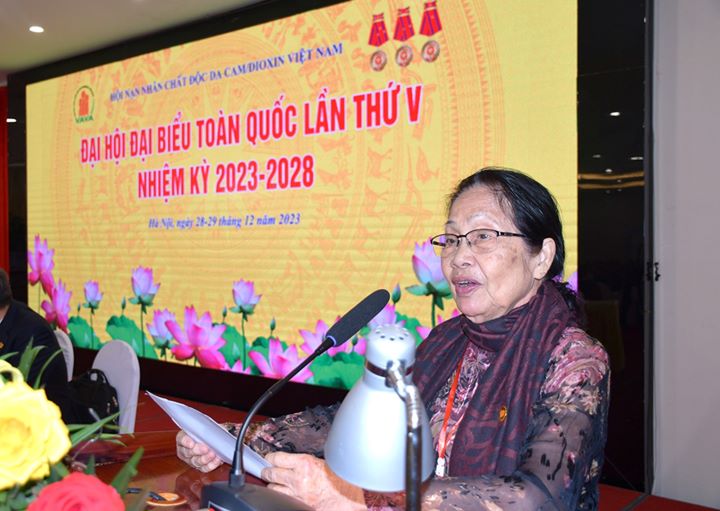




Comment